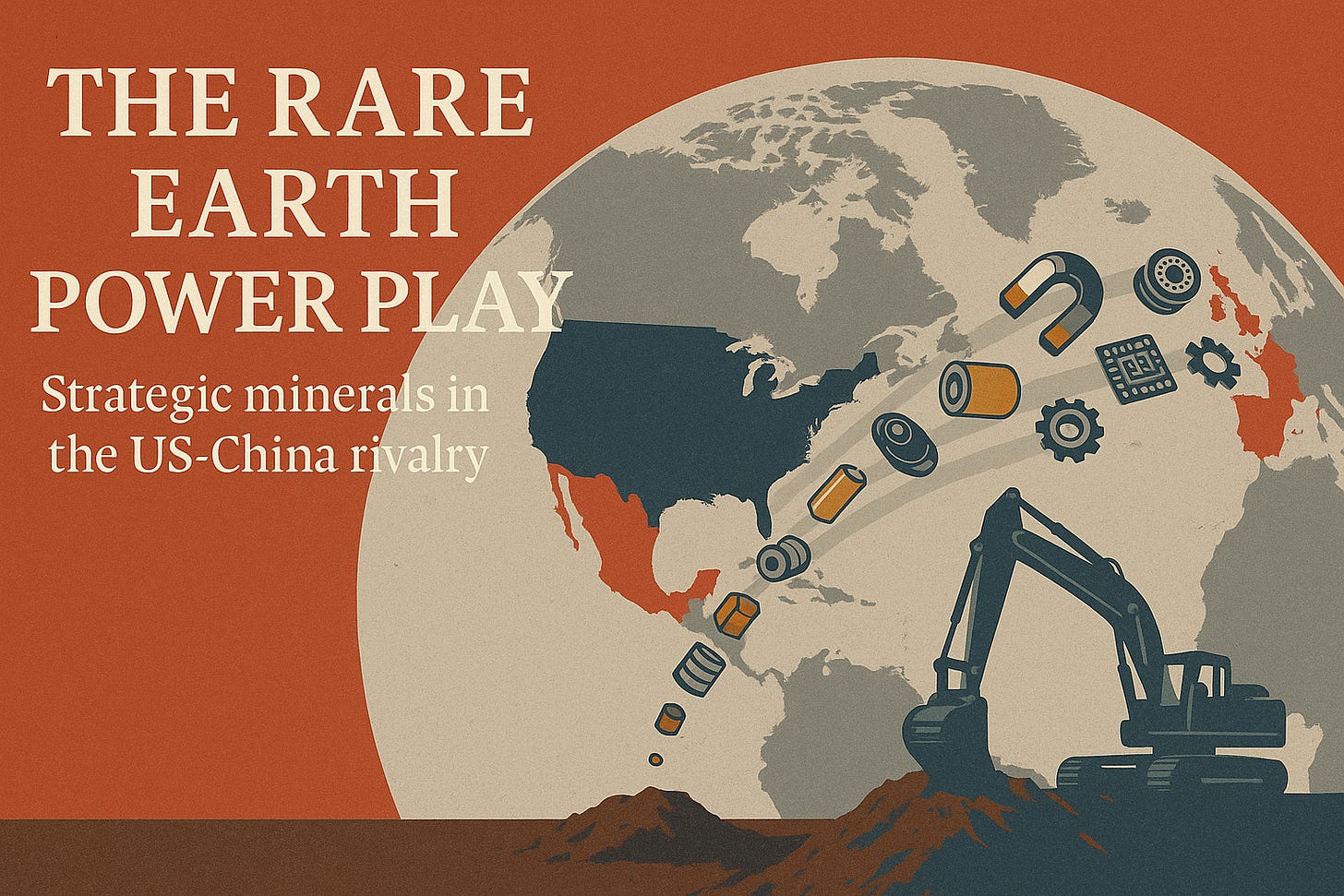Rare Earths: Strategic Minerals, Strategic Power
How Rare Earths Shape the Future of Global Power
If you’ve followed the US–China trade war over the past few years, you’ve likely heard about tariffs, tech bans, and semiconductor chips. But one of the most quietly powerful forces in this standoff hasn’t made as many headlines — rare earth elements (REEs).
These 17 metals are essential for a wide range of applications, from electric vehicles to missile systems. Without them, modern technology and military capability don’t work.
And here’s the twist: China controls more than 85% of the global rare earth processing capacity.
From smartphones and wind turbines to fighter jets and EV batteries, rare earths power the 21st-century economy. Their role in clean energy and national defense makes them strategic assets, not just commodities.
Despite having significant deposits, the U.S. outsourced most of its rare earth mining and processing decades ago, largely due to environmental and economic concerns. That decision created a dangerous dependency — one that’s become painfully clear during times of geopolitical tension.
In 2019, amid rising tensions after the U.S. blacklisted Huawei, Chinese state media dropped a veiled threat: rare earth exports might be restricted.
China didn’t have to act. The threat alone rattled global markets. Xi Jinping even made a high-profile visit to a rare earth plant — a subtle but potent message to Washington.
This wasn’t just about minerals. It was about leverage.
Since then, the U.S. and its allies have taken action to de-risk, diversify and rebuild, including reopening and investing in domestic mining such as Mountain Pass, California; partnering with allies like Australia and Canada for diversified supply chains; pushing for rare earth recycling and substitution technologies, and invoking the Defense Production Act to support independent processing.
However, rebuilding a full rare earth supply chain outside of China is a long-term endeavour. It requires sustained investment, industrial policy and global coordination.
Rare earths represent something deeper than trade friction. This is bigger than trade. It’s about power. They’re part of a global contest over who controls the inputs to the future—energy transition, advanced weaponry, AI, and beyond.
The rare earth story is a powerful reminder: in a multipolar world, economic resilience isn’t just about GDP. It’s about strategic autonomy.
For businesses and policymakers, the message is clear: resilience is no longer a luxury. It is a strategic necessity. Understanding the origin and vulnerability of critical materials like rare earths must become part of standard risk and supply chain assessments.
The rare earth issue highlights a deeper truth about the US–China relationship and the evolving global order. As both nations vie for leadership in technology and energy, materials once considered obscure have become central to global power dynamics.



